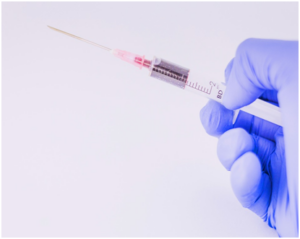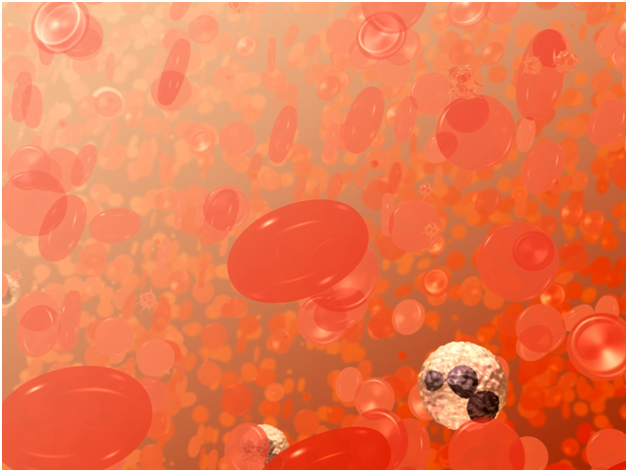Until a few years ago, cortisone injections seemed like the ultimate answer for all musculoskeletal issues. Doctors would prescribe the therapy for recovery from injuries and damage to the muscles and joints from age or athletic activities. Just one injection and the pain and inflammation would magically disappear, allowing patients to continue to lead a healthy life. However, latest research has shown that corticosteroid injections may do far more harm than good. Medical practitioners are now looking for alternatives to help their patients. And, one such option is PRP therapy for knee pain and other musculoskeletal injuries and disorders.
So, what are the downsides of cortisone injections ? And, 60 years since they were first introduced, why do doctors now avoid recommending them? Read ahead and find out.
So, What Exactly are Corticosteroid Injections?

Cortisone injections or corticosteroid shots help you reduce the discomfort and swelling that arises from joint issues. A simple procedure, it can be done in your doctor’s clinic. The injections are inserted into your spine,
shoulder, knee, wrist, ankle, and elbow. If needed, doctors may give you cortisone injections for pain in the hands and feet also. This treatment is especially effective in helping patients manage different types of arthritis including osteoarthritis, tendonitis, and joint pain. Should you opt for the therapy, you can expect that the pain and difficulty in movement will be much improved for 2 to 6 months depending on your individual body structure.
Downsides of Cortisone Treatments
When suggesting the treatment, your doctor will likely talk to you about the possible downsides of cortisone injections so you can make an informed decision. Unfortunately, the positives of the treatment are also their adverse effects. Here are some of the risks you need to be aware of.
You Could Delay Healing by Reducing Pain and Inflammation
Each time you have an injury, the body reacts by flooding the area with blood and other healing components. As a result, you sense pain and inflammation. Cortisone shots work by eliminating the discomfort and swelling. By hampering the natural healing processes of the body, the treatment effectively prolongs the injury and does not allow the torn muscles, tissues, and tendons to recover.
Here’s another factor. Since you don’t feel pain, you’ll continue to use the injured area like before instead of resting the tissues and allowing them to heal. The ongoing stress on the tissues worsens the injury leading to long-term complications. That’s because you end up causing severe damage to your muscles that may be difficult to heal and repair.
You Could Get Joint Infections

In addition to directing healing compounds to the injury site, your body also sends immune cells to help deal with any possible infections. Cortisone injections stop these immune cells from reaching the tissues and without the vital antibodies, you risk infections. In rare cases, the injection procedure itself might also cause infections.
You Might Need Joint Replacements
When you first start to feel pain in the joints, that’s your body indicating that the cartilage and buffering agents cushioning the joints are starting to wear out. Accordingly, you need to take steps that can repair the torn or damaged cartilage. For instance, you should exercise gently to keep your joints lubricated and muscles strong. But, if you take cortisone injections, you’ll be free of pain and continue to use your joints. Eventually, the cartilage will wear out completely, and you’ll need joint replacement surgery.
You Risk Damaging Surrounding Tissues and Bones
Taking cortisone injections more than 2 to 4 times a year can have the effect of thinning and degeneration of the soft tissues and bones around the treatment site. You may also notice that the skin around the injection site has thinned or looks lighter than before. If you’re getting corticosteroid shots for tendonitis, you risk the weakening and possible rupturing of the tendons.
You’ll have to Monitor Blood Sugar Levels
Diabetics may need to carefully monitor their blood sugar levels right after getting the treatment. That’s because cortisones have the effect of raising sugar levels for a short while.
Other Risks You Need to Know About
Aside from the typical downsides of cortisone injections, you risk nerve damage at the treatment site. In rare cases, the shots can cause allergic reactions. Further, right after the treatment, you can expect added discomfort and inflammation for 2 to 3 days. Also, remember that the medication in the cortisone injections can potentially crystallize and cause more pain and discomfort in the long run.
If Not Cortisone Injections, What are Your Options?
The pain, swelling, and difficulty in movement resulting from musculoskeletal issues can make it hard for you to go about your daily activities. But, cortisone injections need not be the only solution. Given their many adverse effects, you might want to choose a therapy that can help you with the pain and perhaps, even heal the damaged tissues. Consider choosing PRP therapy for osteoarthritis. The serum used in Platelet Rich Plasma injections is formulated from your blood and unlikely to have any adverse effects. Further, the treatment merely mimics the natural healing processes of your body. As a result, your tissues heal just as nature intended them to. Watch the pain and inflammation vanish even as the healing restores movement as before. You’ll notice long-term positive effects and an improved quality of life with PRP therapy.







Recent Comments